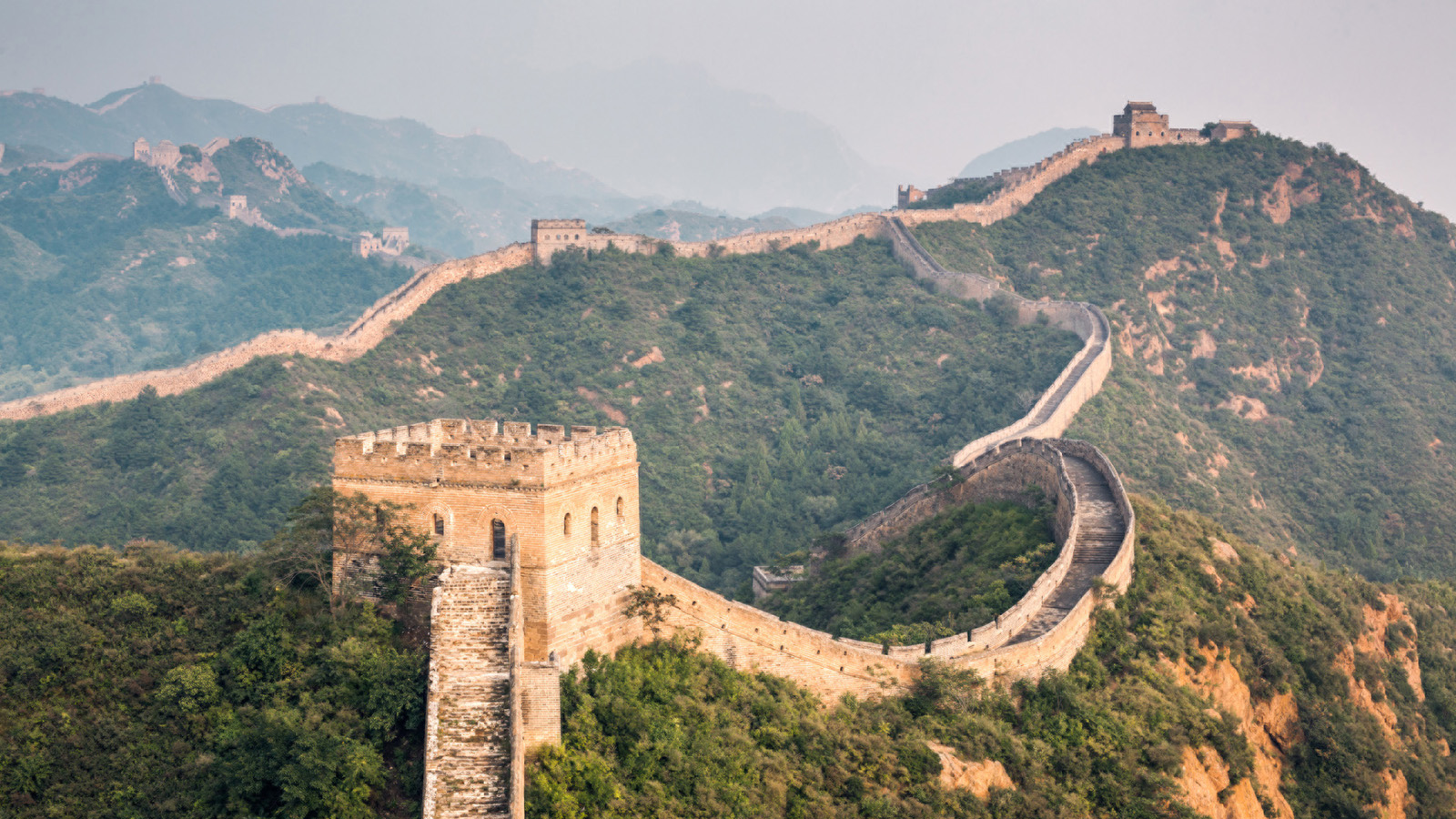
Tourists can explore rich history of China through its Top 10 Historical Sites, showcasing ancient culture, architecture, and heritage.
1. The Great Wall of China:
2. The Forbidden City:
3. The Terracotta Army:
4. The Summer Palace:
5. The Potala Palace:
6. The Mogao Caves:
7. The Longmen Grottoes:
8. The Leshan Giant Buddha:
9. The Ancient City of Pingyao:
10. The Shaolin Temple:
1. The Great Wall of China:
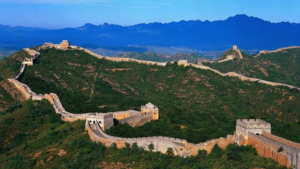
The Great Wall of China is one of the most iconic and must-visit historical sites for tourists in China.
Stretching over 13,000 miles, the Great Wall was originally built over several dynasties to protect China from invasions by nomadic tribes.
Here are some key details about the Great Wall that tourists should know:
History:
Construction of the Great Wall began over 2,000 years ago during the Qin Dynasty and continued through various dynasties, with the majority of the existing wall dating back to the Ming Dynasty (1368-1644).
Sections to Visit:
Several sections of the Great Wall are open to tourists, each offering unique experiences.
Popular sections include Badaling, Mutianyu, Jinshanling, and Simatai. Each section varies in terms of accessibility, crowd levels, and scenery.
Scenic Views:
The Great Wall offers breathtaking views of the surrounding landscapes, including mountains, valleys, and forests.
Visitors can enjoy panoramic vistas and capture stunning photos while exploring the wall.
Hiking and Trekking:
Tourists have the opportunity to hike along the Great Wall, with some sections offering challenging terrain and steep climbs.
Hiking the Great Wall provides a memorable and rewarding experience for adventure enthusiasts.
Cultural Significance:
The Great Wall is not only a remarkable feat of engineering but also holds significant cultural and historical importance for China.
Visitors can learn about the wall’s strategic purpose, construction techniques, and its role in Chinese history.
Visitor Facilities:
Many sections of the Great Wall have visitor facilities such as information centers, souvenir shops, restaurants, and restrooms.
Some sections also offer cable cars or chairlifts for easier access to the wall.
Best Time to Visit:
The Great Wall can be visited year-round, but the best times to visit are during the spring and autumn months when the weather is mild and the landscapes are vibrant.
Summer can be crowded, while winter may bring snow and icy conditions.
Overall, visiting the Great Wall of China is a once-in-a-lifetime experience that offers a blend of history, culture, and natural beauty.
Tourists can plan their visit in advance, wear comfortable shoes, and prepare for different weather conditions while exploring this famous landmark.
2. The Forbidden City:
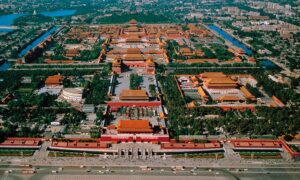
The Forbidden City, also known as the Palace Museum, is one of the most iconic and must-visit historical sites for tourists in China.
Here are some key details about The Forbidden City that tourists should know:
1. History:
The Forbidden City served as the imperial palace for Chinese emperors during the Ming and Qing dynasties, spanning nearly 500 years of history.
It is one of the largest and best-preserved palace complexes in the world.
2. Architecture:
The Forbidden City is renowned for its traditional Chinese architecture, featuring grand halls, pavilions, courtyards, and gardens.
The complex is surrounded by high walls and a moat, symbolizing the emperor’s supreme authority.
3. Cultural Significance:
The Forbidden City is a UNESCO World Heritage Site and a symbol of China’s imperial past.
It houses a vast collection of art, artifacts, and historical treasures that offer insights into Chinese history, art, and culture.
4. Visitor Experience:
Tourists can explore the Forbidden City’s numerous halls, galleries, and courtyards, including the Hall of Supreme Harmony, Hall of Central Harmony, and Hall of Preserving Harmony.
The complex also features the Imperial Garden, where emperors once strolled.
5. Highlights:
Some of the must-see attractions within the Forbidden City include the Meridian Gate, the Hall of Clocks and Watches, the Palace of Heavenly Purity, and the Hall of Mental Cultivation.
Visitors can also witness traditional ceremonies and performances.
6. Visitor Facilities:
The Forbidden City offers visitor facilities such as information centers, audio guides, souvenir shops, and restrooms.
Guided tours are available for those who wish to learn more about the history and significance of the palace complex.
7. Best Time to Visit:
You can visit The Forbidden City year-round, but the best time to visit is during the spring and fall months when the weather is pleasant and the gardens are in bloom.
Summer can be crowded, while winter may bring colder temperatures.
Overall, visiting The Forbidden City is a captivating journey through China’s imperial past, offering tourists a glimpse into the opulence, power, and cultural heritage of the country’s ancient rulers.
Tourists can plan their visit in advance, wear comfortable footwear, and allocate sufficient time to explore these magnificent historical sites of China.
3. The Terracotta Army:
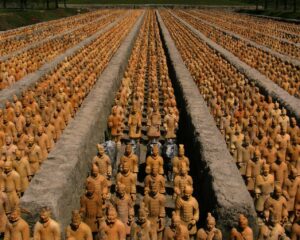
The Terracotta Army, located in the city of Xi’an, China, is one of the most iconic and must-visit historical sites for tourists in China.
Here are some key details about The Terracotta Army that tourists should know:
1. Discovery:
The Terracotta Army was discovered in 1974 by local farmers digging a well. It is a collection of life-sized terracotta sculptures depicting the armies of Qin Shi Huang, the first Emperor of China.
2. Purpose:
The Terracotta Army was created to accompany the emperor in the afterlife and protect him on his journey.
The army represents the military strength of the Qin dynasty.
3. Scale:
The Terracotta Army is a vast collection of over 8,000 soldiers, 130 chariots, and 670 horses, all intricately crafted and individually designed.
The army is in three pits, with Pit 1 being the largest and most impressive.
4. Detail and Craftsmanship:
The terracotta soldiers are incredibly detailed, with each one having unique facial features, hairstyles, and armor.
The craftsmanship and artistry of the sculptures are a testament to the skill of ancient Chinese artisans.
5. Pit 1:
Pit 1 is the largest and most visited of the three pits, containing rows of infantry soldiers in battle formation. It is a breathtaking sight to see the sheer number and scale of the terracotta warriors.
6. Pit 2 and Pit 3:
Pit 2 contains cavalry units and chariots, while Pit 3 is smaller and believed to represent the command post of the army.
7. Visitor Experience:
Tourists can explore the Terracotta Army site, visit the museum to learn more about the history and excavation of the site, and even see artisans at work creating terracotta replicas.
8. Best Time to Visit:
Tourists can visit The Terracotta Army throughout the year, but the best time to visit is during the spring and autumn months when the weather is mild.
Summer can be hot and crowded, while winter may bring colder temperatures.
Visiting The Terracotta Army is a fascinating journey into ancient Chinese history and artistry, offering tourists a glimpse into the military prowess and cultural heritage of the Qin Dynasty.
Tourists can plan their visit in advance, wear comfortable shoes, and experience a truly amazing experience at this UNESCO World Heritage Site.
4. The Summer Palace:
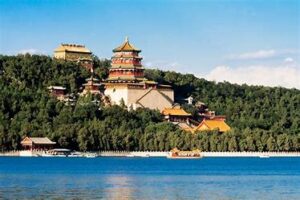
The Summer Palace, located in Beijing, is a magnificent imperial garden and palace complex and is one of China’s most famous and essential historical sites for tourists.
Here are some key details about The Summer Palace that tourists should know:
1. History:
The Summer Palace was originally built in the 12th century as a royal garden for the Jin Dynasty.
It was later expanded and renovated during the Qing Dynasty to serve as a summer retreat for emperors and their families.
2. Design:
The Summer Palace is famous for its beautiful landscaping, traditional Chinese architecture, and serene lakes.
The complex covers an area of 2.9 square kilometers and features pavilions, halls, bridges, and gardens that blend harmoniously with the natural surroundings.
3. Kunming Lake:
The centerpiece of the Summer Palace is Kunming Lake, a man-made lake that covers three-quarters of the total area.
Visitors can take boat rides on the lake, enjoy views of the surrounding hills, and visit the iconic Marble Boat, a pavilion built in the shape of a boat.
4. Longevity Hill:
Longevity Hill is another prominent feature of the Summer Palace, offering panoramic views of the lake and gardens.
Visitors can climb to the top of the hill to visit the Tower of Buddhist Incense, a pagoda that offers stunning views of the entire complex.
5. Seventeen-Arch Bridge:
The Seventeen-Arch Bridge is a picturesque stone bridge that spans Kunming Lake, connecting the eastern shore with the South Lake Island.
The bridge is beautiful with intricate carvings and provides a scenic walkway for visitors.
6. Hall of Benevolence and Longevity:
One of the main buildings in the Summer Palace is the Hall of Benevolence and Longevity, where emperors would hold court and entertain guests.
The hall is beautiful with ornate furnishings and traditional Chinese artwork.
7. Visitor Experience:
Tourists can explore the Summer Palace at their own pace, taking in the tranquil beauty of the gardens, visiting historic buildings, and learning about the history of the complex.
Guided tours and audio guides are available for those who wish to delve deeper into the site’s significance.
8. Best Time to Visit:
Tourists can visit the Summer Palace throughout the year, but the best time to visit is during the spring and autumn months when the weather is mild and the gardens are in bloom.
Summer can be hot and crowded, while winter may bring colder temperatures.
Visiting The Summer Palace is a delightful experience that offers tourists a glimpse into the opulent lifestyle of China’s imperial rulers and the natural beauty of traditional Chinese gardens.
Tourists can plan their visit in advance, wear comfortable shoes, and take their time exploring this UNESCO World Heritage Site.
This sprawling imperial garden in Beijing is famous for its beautiful architecture, pavilions, and beautiful Kunming Lake.
5. The Potala Palace:
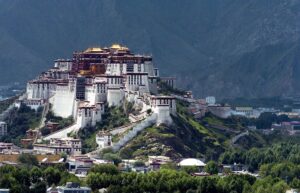
The Potala Palace located in Lhasa, is one of the most iconic and must-visit historical sites for tourists in China. Lhasa, Tibet, which is an autonomous region of China.
Here are some key details about The Potala Palace that tourists should know:
1. History:
The Potala Palace is a UNESCO World Heritage Site and one of the most iconic landmarks in Tibet.
It was originally built in the 7th century by the Tibetan king Songtsen Gampo and later expanded by the 5th Dalai Lama in the 17th century to serve as the winter residence of the Dalai Lamas.
2. Architecture:
The Potala Palace is a magnificent architectural masterpiece that sits atop Marpo Ri (Red Hill) overlooking the city of Lhasa.
It is a massive structure consisting of the White Palace, which served as the administrative center, and the Red Palace, which housed the religious and ceremonial chambers.
3. Cultural significance:
The Potala Palace is a symbol of Tibetan Buddhism and Tibetan culture.
It houses numerous chapels, prayer halls, and sacred relics, including the tombs of past Dalai Lamas.
The palace is a pilgrimage site for Buddhists and a major tourist attraction for visitors from around the world.
4. Art and craftsmanship:
The Potala Palace is adorned with intricate murals, thangka paintings, and statues that showcase the rich artistic heritage of Tibet.
The architecture and design of the palace reflect a unique blend of Tibetan, Indian, and Chinese influences.
5. Visitor experience:
Tourists can explore the Potala Palace by climbing up its steep staircases and walking through its labyrinthine halls and chambers.
The palace offers panoramic views of Lhasa and the surrounding Himalayan mountains, making it a truly awe-inspiring experience for visitors.
6. Best time to visit:
Visitors can visit the Potala Palace throughout the year, but the best time to visit is during the spring and autumn months when the weather is mild and the skies are clear.
Summer can be crowded with tourists, while winter may bring colder temperatures and occasional snowfall.
Visiting The Potala Palace is a unique opportunity to immerse oneself in the rich history, culture, and spirituality of Tibet.
Tourists are encouraged to plan their visit in advance, respect the sacred nature of the site, and take the time to appreciate the beauty and significance of this architectural marvel.
Located in Lhasa, Tibet, this historic palace was once the winter residence of the Dalai Lama and is a significant religious and cultural site.
6. The Mogao Caves:
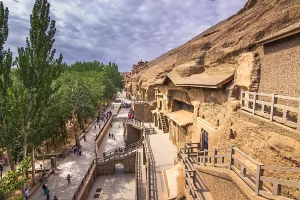
The Mogao Caves, also known as the Mogao Grottoes or the Caves of the Thousand Buddhas, are a UNESCO World Heritage Site located near the city of Dunhuang in Gansu Province,
China, and is one of the most iconic and must-visit historical sites for tourists in China.
Here are some key details about the Mogao Caves that tourists should know:
1. History:
The Mogao Caves date back to the 4th century and were created as a place of Buddhist worship and meditation.
Over the centuries, the caves were expanded and decorated with intricate murals, sculptures, and Buddhist art.
2. Architecture:
The Mogao Caves consist of a complex of 492 caves carved into the cliffs along the ancient Silk Road.
The caves vary in size and design, with some containing multiple chambers and others serving as small niches for meditation.
3. Art and artifacts:
The Mogao Caves are renowned for their exquisite Buddhist art, including colorful murals, painted ceilings, and intricate sculptures of Buddhas, bodhisattvas, and other deities.
The caves also contain a wealth of manuscripts, silk paintings, and other artifacts that provide insight into the religious and cultural practices of ancient China.
4. Visitor experience:
Tourists can choose between caves that are open to the public, each offering a unique glimpse into the region’s artistic and spiritual heritage.
Guided tours are available to help visitors navigate the vast complex and learn about the history and significance of the caves.
5. Conservation efforts:
The Mogao Caves have faced threats from natural erosion, tourism, and environmental factors.
Conservation efforts are ongoing to preserve the delicate artwork and structures within the caves, including measures to control humidity, temperature, and visitor access.
6. Best time to visit:
Tourists can visit the Mogao Caves throughout the year, but the best time to visit is during the spring and autumn months when the weather is mild and the caves are less crowded.
Summer can be hot, while winter may bring colder temperatures and occasional snowfall.
Visiting the Mogao Caves is a unique opportunity to witness the beauty and cultural significance of one of China’s most important archaeological sites.
Tourists can plan their visit in advance, respect the rules and regulations of the site, and take the time to appreciate the artistry and history preserved within these ancient caves.
7. The Longmen Grottoes:
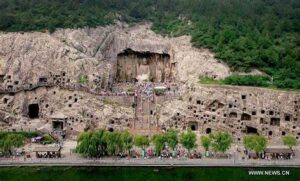
Longmen Grottoes, also known as Longmen Caves, is a UNESCO World Heritage Site located near the city of Luoyang in Henan Province and is one of the historical tourist attractions in China.
Here are some key details about the Longmen Grottoes that tourists should know:
1. History:
The Longmen Grottoes were created between the 5th and 8th centuries during the Northern Wei and Tang dynasties.
The grottoes were carved into limestone cliffs along the Yi River and served as a place of Buddhist worship and artistic expression.
2. Architecture:
The Longmen Grottoes consist of over 2,300 caves and niches, housing more than 100,000 statues of Buddha and other Buddhist deities.
The caves vary in size and design, with some containing large sculptures and others featuring intricate relief carvings.
3. Art and craftsmanship:
The Longmen Grottoes are renowned for their exquisite Buddhist art, including statues, reliefs, and inscriptions that showcase the artistic skill and craftsmanship of ancient Chinese artisans.
The grottoes also feature colorful murals and paintings that depict scenes from Buddhist scriptures and legends.
4. Visitor experience:
Visitors can explore numerous caves, which are open to the public, and offer a unique insight into China’s religious and cultural history.
Guided tours are available to help visitors navigate the vast complex and learn about the history and significance of the grottoes.
5. Conservation efforts:
The Longmen Grottoes have faced threats from natural erosion, pollution, and tourism.
Conservation efforts are ongoing to preserve the delicate artwork and structures within the grottoes, including measures to control humidity, temperature, and visitor access.
6. Best time to visit:
Tourists can visit The Longmen Grottoes throughout the year, but the best time to visit is during the spring and autumn months when the weather is mild and the grottoes are less crowded.
Summer can be hot, while winter may bring colder temperatures and occasional snowfall.
Visiting the Longmen Grottoes is a unique opportunity to witness the beauty and cultural significance of one of China’s most important historical sites.
Tourists are advised to make advance travel plans, follow the site’s rules and regulations, and take the time to enjoy the craftsmanship and history that these ancient caves have preserved.
8. The Leshan Giant Buddha:
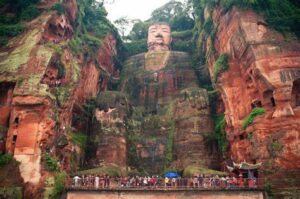
The Leshan Giant Buddha is a monumental statue located near the city of Leshan in Sichuan Province and is one of the most iconic and must-visit historical sites for tourists in China.
Here are some key details about the Leshan Giant Buddha that tourists should know:
1. History:
The Leshan Giant Buddha was carved out of a cliff face during the Tang Dynasty, between the years 713 and 803 AD.
It reduces the sound of the turbulent water at the confluence of the Manjiang, Dadu, and Changi rivers that cause boat accidents.
2. Size:
The Leshan Giant Buddha stands at a towering height of 71 meters (233 feet), making it the largest stone Buddha statue in the world.
Maitreya, a dharma and potential Buddha, is depicted in the statue, which is carved out of a red sandstone cliff.
3. Architecture:
Leshan Giant Buddha with a very beautiful, detailed face, large ears, at peace, and both hands on knees.
The statue is surrounded by a network of walkways and stairs that allow visitors to view it up close and appreciate its massive scale.
4. Visitor experience:
Tourists can visit the Leshan Giant Buddha and explore the surrounding area, which includes temples, shrines, and scenic viewpoints overlooking the rivers below.
Boat tours are also available for a unique perspective of the statue from the water.
5. Conservation efforts:
The Leshan Giant Buddha has faced threats from natural erosion, pollution, and tourism.
Conservation efforts are ongoing to preserve the statue and its surrounding environment, including measures to control water flow and stabilize the cliff face.
6. Best time to visit:
The Leshan Giant Buddha can be visited year-round, but the best times to visit are in the spring and fall when the site is less crowded and the weather is mild.
Tourists are advised to make travel plans ahead of time, follow the site’s rules and regulations, and take the time to admire this old masterpiece’s stunning beauty.
Summer can be hot and humid, while winter may bring colder temperatures.
Visiting the Leshan Giant Buddha is a remarkable experience that offers insight into the rich history and cultural heritage of China.
9. The Ancient City of Pingyao:
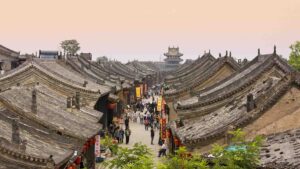
The most well-known and one of the historical sites in China is the Ancient City of Pingyao, a well-preserved, ancient walled city located in Shaanxi Province for tourists.
Here are some key details about the Ancient City of Pingyao that tourists should know:
1. History:
One of China’s best-preserved old-walled towns, Pingyao, dates back more than 2,700 years.
It was an important financial center during the Ming and Qing dynasties and played a significant role in the country’s economic development.
2. Architecture:
A massive defensive wall surrounds the city, which spans 6 kilometers (3, 7 miles) and has six gates, watchtowers, and ramparts.
Inside the walls, visitors can explore well-preserved traditional Chinese architecture, including ancient courtyards, temples, and historic buildings.
3. UNESCO World Heritage Site:
The Ancient City of Pingyao was designated a UNESCO World Heritage Site in 1997 for its outstanding preservation of traditional Chinese urban planning and architecture.
It offers a rare glimpse into China’s ancient past and cultural heritage.
4. Visitor experience:
Tourists can walk or cycle along the city walls to enjoy panoramic views of the city and its surroundings.
Inside the city, visitors can wander through narrow lanes, visit ancient temples and museums, and shop for traditional handicrafts and souvenirs.
5. Festivals and events:
The Ancient City of Pingyao hosts various cultural events and festivals throughout the year, including the Pingyao International Photography Festival and the Pingyao International Film Festival.
These events showcase the city’s rich cultural heritage and artistic traditions.
6. Best time to visit:
The Ancient City of Pingyao can be visited year-round, but the best times to visit are during the spring and autumn months when the weather is mild and the city is less crowded.
The Shaolin Temple is open year-round, but the best times to visit are in the spring and fall when the weather is mild and the church grounds are less crowded.
Summer can be hot, while winter may bring colder temperatures.
Visiting the Ancient City of Pingyao is a unique opportunity to step back in time and experience the charm and history of ancient China.
Tourists are encouraged to explore the city at a leisurely pace, immerse themselves in its rich cultural heritage, and appreciate the beauty of its well-preserved architecture and traditions.
10. The Shaolin Temple:
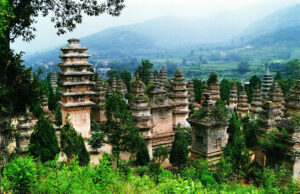
The Shaolin Temple is a renowned Buddhist temple located in Henan Province and is one of the most iconic and must-visit historical sites for tourists in China.
Here are some key details about the Shaolin Temple that tourists should know:
1. History:
The Shaolin Temple has a history dating back over 1,500 years and is famous for its association with martial arts and Chan Buddhism.
It was established in the fifth century and has since become a representation of Chinese tradition and culture.
2. Martial arts:
The Shaolin Temple is known for its connection to Shaolin Kung Fu, a martial art that originated within the temple’s walls.
Visitors can witness martial arts performances by skilled practitioners, as well as participate in workshops to learn basic techniques.
3. Architecture:
The Shaolin Temple features a complex of ancient buildings, including halls, pagodas, and courtyards.
The temple’s architecture reflects traditional Chinese design elements and Buddhist symbolism, making it a visually stunning and culturally significant site.
4. UNESCO World Heritage Site:
In 2010, The Shaolin Temple was included in the “Historic Monuments of Dengfeng in“ The Center of Heaven and Earth “designation. It is a UNESCO World Heritage Site.
This recognition highlights the temple’s historical and cultural importance.
5. Cultural experiences:
Tourists visiting the Shaolin Temple can participate in cultural activities such as meditation sessions, calligraphy classes, and tea ceremonies.
These experiences offer insight into the spiritual practices and daily life of the temple’s monks.
6. Best time to visit:
The Shaolin Temple is open year-round, but the best times to visit are in the spring and fall when the weather is mild and the church grounds are less crowded.
Summer can be hot, while winter may bring colder temperatures.
Visiting the Shaolin Temple is a unique opportunity to immerse oneself in Chinese history, culture, and spirituality.
Tourists are encouraged to take in martial arts demonstrations, visit temple grounds, and interact with the neighborhood’s residents to gain a greater appreciation for this renowned site.
These are just a few of the many historical sites in China that offer a fascinating look into the country’s rich cultural heritage.
I recommend further research or consulting with a travel guide for more detailed information on each site.







